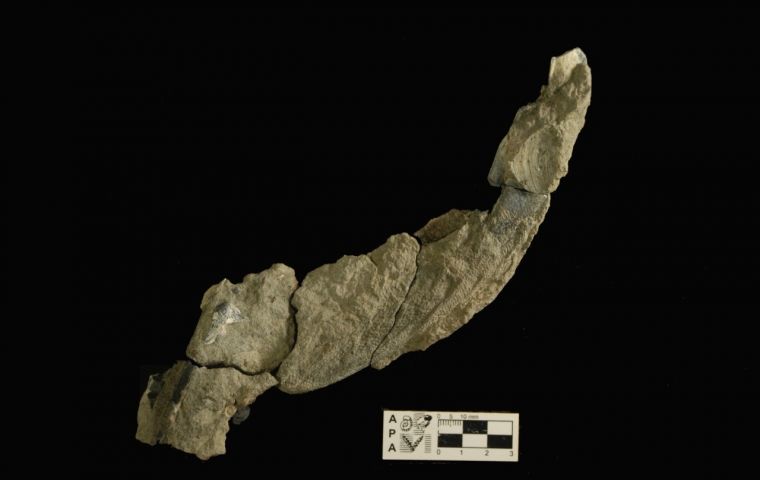MercoPress. South Atlantic News Agency
Argentine researchers find fossilized wing skin of a 43 million year old penguin in Antarctica
 The fossilized skin belongs to the Palaeeudyptes gunnari, one of the many extinct types of penguins that lived in Antarctica during the Eocene period
The fossilized skin belongs to the Palaeeudyptes gunnari, one of the many extinct types of penguins that lived in Antarctica during the Eocene period Argentine researchers have announced the discovery of fossilized skin on the remains of the wing of a 43-million-year-old penguin on Marambio Island in the Antarctic.
The fossil was actually discovered during a research mission in 2014.
The fossil was then studied at the La Plata Museum by Argentine paleontologist Carolina Acosta Hospitaleche, the agency for scientific disclosure at La Matanza National University said on Friday.
The fossilized skin belongs to the Palaeeudyptes gunnari, one of the many extinct types of penguins that lived in Antarctica during the Eocene period, which lasted from around 56 to 34 million years ago.
At that time, Antarctica was covered in woodland and boasted a diverse fauna.
“The fossilization of the skin of this wing is unique because it’s the first conserved example in the world of a penguin with skin,” said Acosta Hospitaleche.
“The skin was conserved as a fossil on both surfaces of its wing, enveloping the bones that have remained articulated in their original position,” she added.




Top Comments
Disclaimer & comment rulesCommenting for this story is now closed.
If you have a Facebook account, become a fan and comment on our Facebook Page!